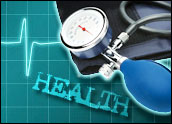
The future of the mHealth space is, in a word, “growth,” which is exemplified at this week’s International CTIA Wireless 2012 trade show in New Orleans. Several companies are presenting their wares in the Wireless Health Pavilion, with innovations that allow consumers to monitor health remotely, track daily habits, manage health records, track inventory, and support physical wellness.
The mobile health sector has a good prognosis, in part, because aging boomers are likely to embrace mobile phones to monitor their health, while healthcare providers increasingly turn to mobile technologies to stay connected and share health information via the cloud.
The mHealth market is expected to grow from just US$500 million in 2010 to $8 billion by 2018, according to a report from Global Data.
That forecast follows a prediction that the mHealth app market will nearly double in 2012 — from $718 million in 2011 to $1.3 billion in 2012, based on a study conducted by Research2Guidance.
While these figures represent just a small part of the global healthcare market — which is expected to reach $6 trillion this year — mHealth will only see a greater market share in the years to come.
“The mobile health space is growing very rapidly,” said Richard J. Lobvosky, vice president of business development for Lifecomm. “In the last three years, it has at least doubled. There is a lot of growth and a lot of opportunity in this space.”
mHealth Embraced by Boomers
One of the reasons for the explosion in mHealth is that it being embraced and, more importantly, adopted by aging boomers. This includes several offerings for providing tracking and emergency response.
A generation ago it was the LifeLine product — made famous by the widely mocked “I’ve fallen and can’t get up” TV commercial — that allowed seniors, in essence, to call for help in an emergency.
Companies such as Lifecomm and eTrak have taken this concept to the next level, allowing users to call for help whenever — and wherever — they take a spill, not just at home.
“Lifecomm’s system uses a Qualcomm cellular module,” said Lobvosky, “so it operates at home and most places you’d end up going. It has fall detection built in, but much more.”
The device can also measure the number of steps a user takes and track daily activity, thus blurring the line between a health and fitness device, encouraging seniors to stay active while still providing the emergency response capability.
“Boomers are more tech savvy and can understand this technology,” said John Harris, CEO of eTrak.
This understanding, coupled with technology advances, is what makes these new products so much more helpful for consumers, he added.
“We are blazing a trail, as those LifeLine products only use landline telephone systems,” explained Harris. “Those products only work around your home. We have a cellular-based technology, so it is a ‘follow me around’ platform and can be carried anywhere you go.”
eTrak can also send texts and emails, and it includes a map with turn-by-turn directions to get healthcare responders to patients in the case of an emergency, Harris told TechNewsWorld. “The old technology can’t do that.”
mHealth Opens New Markets
Even those involved in the space don’t necessarily see this as just about mobile health, though.
“I’m not actually in the mobile healthcare industry,” quipped Harris. “This is an emergency response product. But we see this very much as an emerging market. This market is growing very, very fast.”
Beyond boomers, there is opportunity in this space for elderly patients suffering from Alzheimer’s and children with autism, as well as parents’ groups, businesses and enterprises interested in tracking both people and physical assets — and even the education industry and school districts, to help track special needs kids.
“There are a lot of opportunities with mHealth,” Ross Rubin, principal analyst with the NPD Group, told TechNewWorld.
This includes the telemedicine field, he noted, which lets doctors interact with patients using a smartphone.
Opportunities – but Issues to Resolve
While the opportunities for growth are being highlighted by the CTIA attendees, there are still issues to resolve and warnings that proper “treatment” could be required to maintain growth.
“Mobile is very much emerging in the health space,” Michael Pliskin, CTO of Swiss MedMobile, told TechNewsWorld, “but it depends very much on the segment and the country involved. So I would say that everyone is looking for a viable business model and a mobile solution. There are a lot of opportunities for smartphone apps and smartphone solutions.”
However, challenges remain.
“To enter the mHealth market, you need to speak with the mobile industry and you need to speak with the healthcare industry to be able to bring doctors and health care together,” Pliskin said. “And you need to deal with insurance and co-payment and everything that goes with it — and this can vary very much from country to country. It can all be very complicated when you are talking about healthcare.”





















































